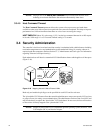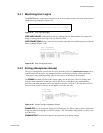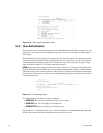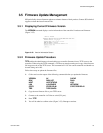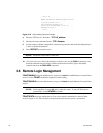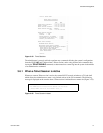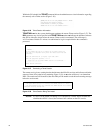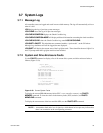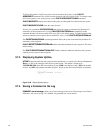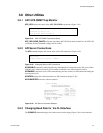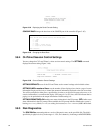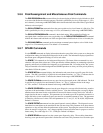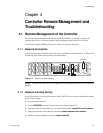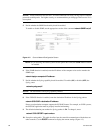
80 007-5510-002
To display the number of LUN array parity errors detected by the system, use the FAULTS
ARRAYPARITY command. The system saves the counts for each tier of all the LUNs. To clear the count
of LUN array parity errors in the system, use the FAULTS ARRAYPARITYCLEAR command.
FAULTS BUSPARITY displays the number of bus parity and data path errors detected by the system.
FAULTS BUSPARITYCLEAR clears the count of errors.
You may set a parameter (ECCSHUTDOWN) that allows the system to automatically shutdown if it
encounters an unrecoverable error. Use the FAULTS ECCSHUTDOWN=on command to enable
automatic shutdown for unrecoverable ECC errors. This is the default setting. To disable and allow the
system to continue to run in spite of unrecoverable ECC errors, use the FAULTS ECCSHUTDOWN=off.
The EXCEPTIONSHUTDOWN command parameter allows the system to automatically shutdown if it
encounters a task exception.
FAULTS
EXCEPTIONSHUTDOWN=ON enables automatic shutdown for task exceptions. This is the
default setting.
The FAULTS EXCEPTIONSHUTDOWN=OFF disables automatic shutdown and allows the system to
continue to run in spite of task exceptions.
3.7.3 Displaying System Uptime
UPTIME displays the total time the system has been operational--or “uptime”(also known as Power on
Hours), as well as the total time since the last system restart. The uptime is displayed as
YY:DDD:HH:MM where YY is the number of years, DDD is the number of days, HH is the number
of hours, and MM is the number of minutes (Figure 3–60) the system has been continually in operation.
Figure 3–60 Display System Uptime
3.7.4 Saving a Comment to the Log
COMMENT <text of message> allows you to echo a message to the screen. The message is saved in the
LOG and is also sent to syslog if it is enabled. Any printable text can be entered.



